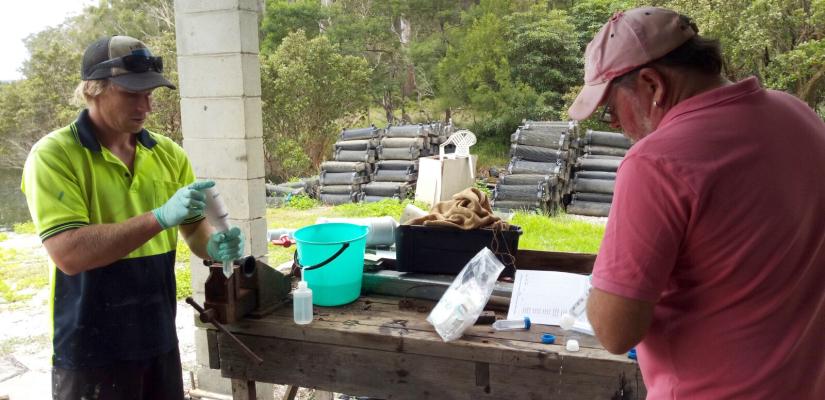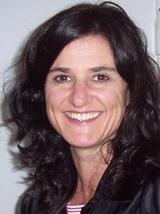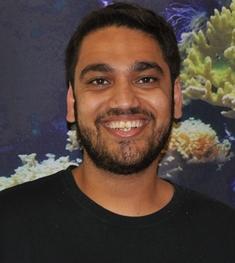While floods and wild weather continue to impact NSW’s coastal areas, leaving many in the oyster industry counting the cost of lost infrastructure and time, one ray of hope is a piece of research from the Seafood Safety Group at UTS that promises to transform the way the industry works.
“Our research aims to help oyster farms stay open for longer, harvest more oysters, supply more regularly to customers and increase their revenue,” says Dr Penelope Ajani, Research Fellow. “Following months of devastating floods, we hope this will come as welcome news.”
The breakthrough research has demonstrated that real-time monitoring of salinity and water temperature provides a faster and more accurate way to test water quality in oyster farms than the rainfall-based management system which is what oyster farmers currently use.
Professor Shauna Murray, who leads the project, says water monitoring is an important part of food safety because oysters can pick up impurities from the water around them. If harmful microalgal species accumulate, or when bacteria are washed into estuaries, it can trigger the growth of potentially harmful pathogens.
“After heavy rain, regulators like the Biosecurity and Food Safety team from the NSW Department of Primary Industries (DPI) close oyster farms until testing confirms that oysters are safe for harvesting. This means oyster farms might be closed unnecessarily, costing farmers up to $100,000 a day in lost revenue,” she explains.
The project started in 2016 when the team deployed real-time sensors into 13 estuaries up and down the coast. They predicted that salinity would be a faster predictor of bacteria in the water and rallied key collaborators to join the team, including the NSW DPI and the Food Agility Cooperative Research Centre (CRC).
“But absolutely central to the success of the project were the frontline workers in the oyster industry itself,” continues Dr Ajani.
“Oyster farmers, acting as citizen scientists, took over 8,000 water samples and 4,000 oyster samples from 100 farms, every two weeks, for over two years. This makes it the largest dataset of water quality and health measurements from oyster-producing estuaries in the world.”
The research was a success. In 87% of the models they ran, they demonstrated that salinity is much better than rainfall at predicting potentially dangerous bacteria, such as e-coli, and harmful algae in the water at both a farm and estuary level.
Oyster farmers Ian and Rose Crisp from the Manning River area of NSW, were involved in the citizen science project and say it was a big but worthwhile commitment, particularly now the results are in.
“Anything we can do to extend our harvest time safely, that is more efficient and competitive, then obviously, we want to try it,” says Mr Crisp.
"The project has changed the way we manage our oyster farms. We now use salinity meters to make decisions on whether we work oysters or move oysters into a particular area.
Anthony Zammit, Manager of the Shellfish Program at NSW DPI, says there is no doubt that, outside of extreme weather events, the real-time monitoring system is supporting oyster farmers in their day-to-day farming, reducing operating costs and increasing opportunities to sell.
He attributes the success of the collaboration to Professor Murray’s willingness to conduct research that addresses industry problems and says the project shows the strength of the “tripartite” of researchers, government and industry.
“If you come together in the spirit of collaboration, it works really well. Shauna is now the chair of the NSW Shellfish Committee because the government and industry recognised that she's played this important role.”
Six of the 13 estuaries have now adopted the suggested salinity-only management plan and a huge communication project is underway to promote this model to oyster farmers in other areas in NSW. This will be helped by DPI research that found the system kept estuaries open for an extra two harvest weeks per year with the potential economic benefit estimated at $3 million/year before costs – a huge increase of 5.4%.
Next steps include a move towards national adoption and investing in new technologies such as mobile apps, to help farmers use the technology, and developing rapid ‘self-serve’ PCR tests for farmers to detect harmful algae and e-coli on site.
“Aquaculture is one of the biggest growing food industries in the world because it's often more sustainable and less intrusive than agriculture,” continues Dr Ajani.
“I’m particularly interested in it because it may well prove to be one of the prime ways we are able to feed the world as we move into the future.”
Research team
-
Lead, Seafood Safety Group
-
Seafood Safety Program
-
Seafood Safety Group
-
Seafood Safety Group
-
Matt TesorieroSeafood Safety Group
-
Principal Research Scientist, NSW DPI
-
Research Scientist, NSW DPI
-
Anthony ZammitShellfish Program Manager, NSW DPI
-
Brian HughesHunter Local Land Services






